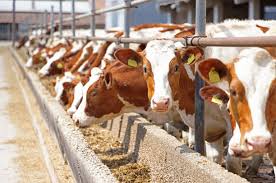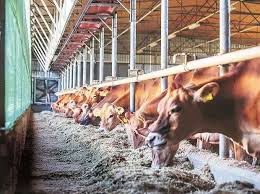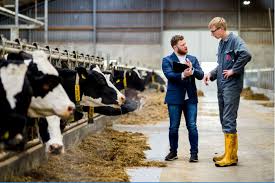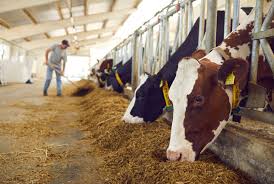Animal husbandry is a branch of agriculture that focuses on the breeding and care of animals for various purposes, including food production, fiber, labor, and companionship.
It plays a crucial role in sustaining livelihoods, providing food security, and promoting economic development.
Animal husbandry involves the science and art of raising animals for human use. This practice encompasses a wide range of activities, including breeding, feeding, sheltering, and health care.
Farmers and ranchers aim to improve animal productivity, ensure animal welfare, and maintain environmental sustainability.
Importance of Animal Husbandry in Agriculture
1. Food Production: Animal husbandry is vital for producing meat, milk, eggs, and other animal-based products, contributing significantly to global food supply.
2. Economic Contribution: The livestock sector generates substantial income for farmers and contributes to local and national economies through sales and exports.
3. Employment Opportunities: Animal husbandry creates jobs in farming, veterinary services, processing, and transportation, enhancing rural employment.
4. Soil Fertility: Livestock manure serves as an organic fertilizer, improving soil health and productivity when integrated into crop production systems.
5. Cultural Significance: Livestock holds cultural and social importance in many communities, playing a role in traditions, rituals, and social status.
Types of Animal Husbandry Practices

1. Subsistence Animal Husbandry: Small-scale farming focused on meeting the basic needs of the family, often involving mixed farming with crops and livestock.
2. Commercial Animal Husbandry: Large-scale production aimed at generating profits, emphasizing efficiency and high productivity through specialized breeding and management practices.
3. Extensive Animal Husbandry: Animals are raised on large areas of land with minimal input, often relying on natural grazing and local resources.
4. Intensive Animal Husbandry: Animals are kept in confined spaces, focusing on high-density production with controlled feeding and breeding practices.
5. Organic Animal Husbandry: Practices that avoid synthetic chemicals and emphasize animal welfare, sustainable feed sources, and ecological balance.
Key Species in Animal Husbandry
1. Cattle: Raised primarily for beef and milk production, cattle are one of the most important livestock species globally.
2. Sheep: Sheep provide wool, meat (lamb and mutton), and milk, making them significant in many agricultural systems.
3. Goats: Goats are versatile animals raised for meat, milk, and fiber, known for their adaptability to various environments.
4. Pigs: Pigs are valued for their rapid growth and high feed conversion efficiency, making them important for meat production.
5. Poultry: Chickens, ducks, and turkeys are raised for eggs and meat, contributing significantly to the global protein supply.
Breeding Techniques in Animal Husbandry
1. Natural Breeding: Traditional method where animals mate naturally without human intervention, allowing for genetic diversity.
2. Artificial Insemination (AI): A technique where semen is collected and artificially introduced to females, allowing for controlled breeding and improved genetics.
3. Embryo Transfer: A process that involves fertilizing an egg in a lab and implanting it into a surrogate female, facilitating the rapid propagation of desired traits.
4. Genetic Selection: The practice of choosing specific animals based on desirable traits, such as growth rate, disease resistance, and reproductive performance.
5. Crossbreeding: Breeding animals from different breeds to produce offspring with improved traits, such as hybrid vigor or adaptability to environmental conditions.
Read Also: Introduction and Feasibility Study on Fish Farming
Nutrition and Feeding Strategies

1. Nutritional Requirements: Each animal species has specific nutritional needs based on age, growth stage, and production goals (e.g., meat, milk). It’s essential to provide a balanced diet that meets these requirements for optimal health and productivity.
2. Types of Feed:
i. Concentrates: High-energy feed like grains, which provide essential calories.
ii. Roughages: Fibrous feeds like hay and silage, which are crucial for digestion and gut health.
iii. Supplements: Vitamins and minerals added to the diet to prevent deficiencies.
3. Feeding Strategies:
i. Total Mixed Ration (TMR): A method where all feed ingredients are mixed together, ensuring a balanced diet in each bite.
ii. Pasture-Based Feeding: Utilizing natural grazing for ruminants, which can reduce feed costs and improve animal welfare.
iii. Scheduled Feeding: Establishing a consistent feeding routine to optimize digestion and nutrient absorption.
Health Management and Disease Prevention
1. Regular Health Checks: Routine veterinary check-ups help identify and address health issues early, promoting overall well-being.
2. Vaccination Programs: Implementing vaccinations can prevent common diseases and outbreaks, safeguarding animal health.
3. Biosecurity Measures:
i. Controlling Access: Limiting visitor access to minimize disease introduction.
ii. Quarantine Practices: Isolating new animals before introducing them to the herd to prevent disease spread.
4. Nutrition and Health Connection: A well-balanced diet strengthens the immune system, reducing disease susceptibility and improving recovery rates.
Housing and Environmental Needs
1. Shelter Requirements: Animals need appropriate housing that protects them from harsh weather conditions, such as heat, cold, and rain.
2. Space and Density: Providing sufficient space helps reduce stress and aggression among animals, contributing to better health and productivity.
3. Ventilation and Air Quality: Good ventilation is vital for maintaining air quality and preventing respiratory issues. Proper air circulation helps remove ammonia and humidity from animal housing.
4. Bedding and Cleanliness: Clean bedding and regular cleaning of living areas help prevent disease and promote animal comfort.
Sustainable Animal Husbandry Practices
1. Rotational Grazing: This practice involves moving animals between pastures to prevent overgrazing, improve soil health, and enhance pasture recovery.
2. Integrated Farming Systems: Combining crop and livestock production can enhance resource efficiency and sustainability, leading to better nutrient cycling and reduced waste.
3. Waste Management: Utilizing animal waste as fertilizer can enrich soil fertility while reducing environmental pollution.
4. Conservation Practices: Implementing measures that protect biodiversity and natural habitats, such as maintaining hedgerows and wetlands, contributes to ecosystem health.
Read Also: How to Market your Matured Fishes for Profit
Economic Aspects of Animal Husbandry

1. Cost of Production: Understanding the cost of feed, veterinary care, housing, and labor is crucial for determining the overall profitability of an animal husbandry operation.
2. Market Demand: Analyzing market trends for animal products (meat, milk, eggs) helps farmers align production with consumer preferences, maximizing profits.
3. Subsidies and Financial Support: Utilizing government programs and subsidies can provide financial assistance and reduce operational costs.
4. Diversification of Income: Exploring additional revenue streams, such as agritourism or direct-to-consumer sales, can enhance economic stability.
Challenges Facing Animal Husbandry
1. Disease Outbreaks: Animal diseases can spread rapidly, affecting herd health and causing economic losses. Effective disease management is essential.
2. Feed Availability: Fluctuations in feed supply and prices can impact production costs, making it challenging for farmers to maintain profitability.
3. Climate Change: Changes in weather patterns can affect animal health, feed production, and water availability, requiring farmers to adapt their practices.
4. Regulatory Compliance: Farmers must adhere to various regulations regarding animal welfare, food safety, and environmental protection, which can be complex and costly.
5. Market Access: Limited access to markets can hinder the sale of animal products, affecting income and sustainability.
Technological Innovations in Animal Husbandry
1. Precision Livestock Farming: Technologies like sensors and GPS help monitor animal health and behavior, leading to improved management and productivity.
2. Automated Feeding Systems: These systems ensure animals receive the correct amount of feed, improving efficiency and reducing waste.
3. Genomic Selection: Advancements in genetic research allow for the selection of animals with desirable traits, enhancing growth, disease resistance, and productivity.
4. Mobile Applications: Farmers can access information on best practices, market prices, and animal health, making informed decisions more easily.
5. Data Analytics: Analyzing data from various sources helps farmers make better management decisions, improving overall farm performance.
Animal Welfare Considerations
1. Proper Housing: Providing adequate space, shelter, and ventilation is crucial for the comfort and well-being of animals.
2. Access to Water and Nutrition: Ensuring that animals have consistent access to clean water and balanced nutrition is vital for their health.
3. Behavioral Needs: Recognizing and providing for natural behaviors, such as grazing and social interaction, promotes better animal welfare.
4. Veterinary Care: Regular health check-ups and prompt treatment of illnesses contribute to overall animal well-being and productivity.
5. Ethical Practices: Implementing humane handling and management practices fosters a positive relationship between farmers and their animals, leading to better welfare outcomes.
Animal husbandry is a multifaceted discipline that requires careful attention to nutrition, health management, housing, sustainability, and economic considerations.
Animal husbandry is an essential aspect of agriculture, contributing to food production, economic stability, and cultural significance. Understanding the types of practices, key species, and breeding techniques involved in animal husbandry enables farmers to improve productivity, ensure animal welfare, and promote sustainable agricultural practices.
Do you have any questions, suggestions, or contributions? If so, please feel free to use the comment box below to share your thoughts. We also encourage you to kindly share this information with others who might benefit from it. Since we can’t reach everyone at once, we truly appreciate your help in spreading the word. Thank you so much for your support and for sharing!
Read Also: How to Grow Tomatoes in Containers

